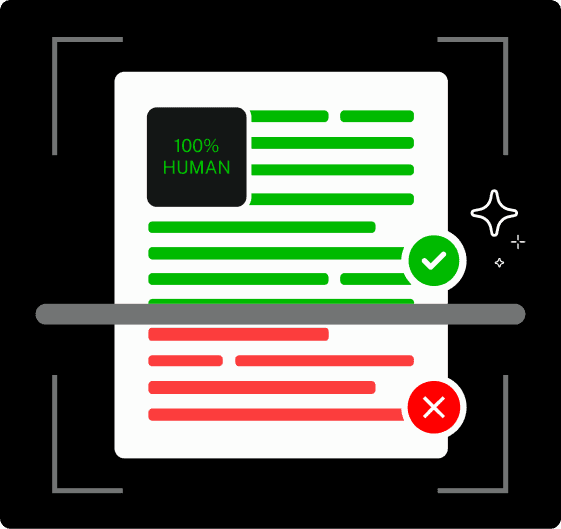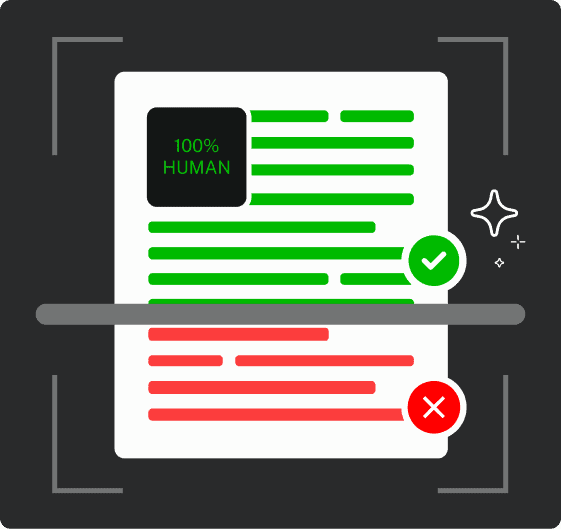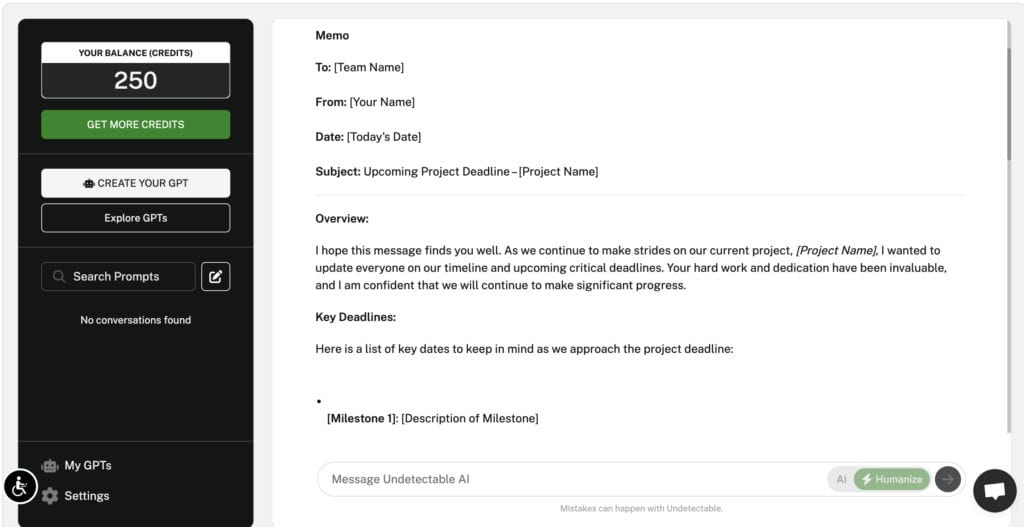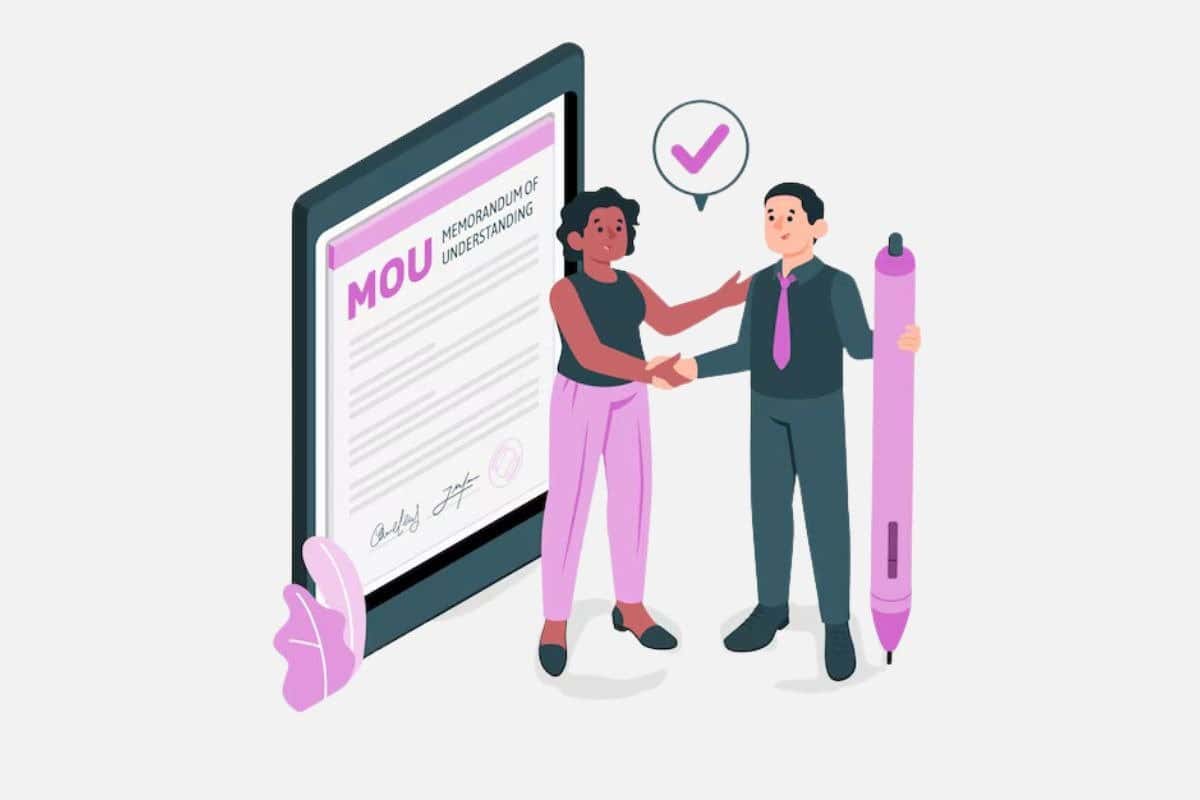Nobody wakes up excited to write a memo.
But let’s face it, sometimes, you just need to get important info out quickly and clearly.
Whether you’re announcing a new policy, updating your team, or giving a heads-up about an upcoming change, a memo keeps things simple: no back-and-forth emails, no unnecessary meetings, just straight-to-the-point communication.
The good news? Writing a memo doesn’t have to be complicated.
With the right structure and a few smart tweaks, you can make sure your message is read, understood, and acted on—without anyone zoning out halfway through.
Let’s break it down.
What Is a Memo?
A memo (short for memorandum) is a short, structured document used for internal communication in a business or organization.
Unlike emails, which can be casual or conversational, memos are meant to be clear, direct, and to the point—perfect for sharing important updates, policies, or instructions without any unnecessary fluff.
Think of it as the professional version of “Hey, everyone, here’s what’s happening.”


Never Worry About AI Detecting Your Texts Again. Undetectable AI Can Help You:
- Make your AI assisted writing appear human-like.
- Bypass all major AI detection tools with just one click.
- Use AI safely and confidently in school and work.
Whether it’s from a manager to a team, HR to employees, or leadership to an entire company, memos make sure everyone is on the same page.
When to Use a Memo

Memos work best when you need to communicate important information to a group of people in a structured way. You might use a memo when:
- Announcing a company policy change (like new work-from-home guidelines)
- Providing updates on a project or initiative
- Outlining procedures or instructions
- Making an internal company announcement
- Addressing a problem that needs immediate attention
If your message is formal, needs to be documented, or involves multiple recipients, a memo is the way to go. If it’s a quick, informal check-in, an email or chat message might be enough.
Now that you know when to use a memo, let’s talk about how to structure one properly.
Key Elements of a Memo
A great memo isn’t just about what you say, it’s about how you structure it.
Keeping it clear, organized, and easy to skim makes sure your message actually gets read (and not ignored in an inbox full of other things).
Here’s what every memo should include:
1. Heading (To, From, Date, Subject)
Start with the basics. Every memo should include:
- To: Who is this memo for? (A team, department, or entire company)
From: Who is sending it? (Your name and job title)
Date: When it was written
Subject: A short, specific title that instantly tells the reader what the memo is about
Example:
To: All Employees
From: Jane Doe, HR Manager
Date: February 1, 2025
Subject: New Remote Work Policy
2. Opening Statement (Purpose of the Memo)
Get straight to the point. In the first sentence, tell people why they’re reading this. This isn’t the place for long introductions—just a clear “Here’s what this is about” statement.
Example:
“This memo outlines the company’s updated remote work policy, effective March 1, 2025.”
3. Body (Details and Supporting Information)
Here’s where you give the details. Depending on the topic, this section might include:
- The who, what, when, where, and why of the announcement
- Key dates, deadlines, or instructions
- Any necessary background info or reasoning
Keep sentences short, use bullet points if needed, and only include relevant details—nobody wants to dig through paragraphs of text to find the main point.
Example:
“Starting March 1, employees will be required to work in-office at least two days per week. The goal is to maintain flexibility while fostering collaboration. Teams may coordinate their in-office days based on department needs.”
4. Call to Action (Next Steps or Recommendations)
What should people do after reading this? Whether it’s following a new process, attending a meeting, or reaching out for questions, spell it out clearly.
Example:
“Managers should coordinate with their teams to finalize in-office schedules by February 15. If you have questions, please reach out to HR.”
5. Closing Remarks (Optional)
Not every memo needs a closing, but if you want to end on a positive note, a simple thank-you or acknowledgment can help.
Example:
“Thank you for your flexibility as we continue to improve our work policies. We appreciate your commitment to collaboration and success.”
Step-by-Step Guide to Writing a Memo
Here’s how to get it done quickly without overthinking.
Step 1: Define the Purpose
If you don’t know exactly why you’re writing this memo, your reader won’t either.
Keep it simple—what’s the key message? If you can’t sum it up in one sentence, rethink your approach.
Step 2: Identify the Audience
Who’s reading this? The way you word things will change depending on whether you’re addressing leadership, your team, or the whole company.
Tailor your memo so it speaks directly to the people who need to act on it.
Step 3: Write the Memo
Instead of starting from scratch, let our AI Chat do the heavy lifting. Just enter a simple prompt like:
- “Write a professional memo announcing a new remote work policy.”
- “Draft a memo for a team update on an upcoming project deadline.”
- “Create a memo about office security updates for employees.”
AI Chat will generate a structured, well-written draft in seconds, saving you time and effort.
Check it out:

Step 4: Refine and Personalize
AI Chat gives you a strong starting point, but don’t just copy and paste.
Read through the memo and make adjustments to match your tone, add company-specific details, and ensure it feels authentic to your team.
Step 5: Humanize the Final Draft
Even with AI, memos should still feel human and natural.
Drop your final draft into AI Humanizer to smooth out any robotic phrasing and make sure it reads like something you’d actually send.
Explore our AI Detector and Humanizer using the widget below!
Examples of Effective Memos
Need a memo but don’t want to start from scratch?
Here are four ready-to-use examples that you can tweak and send.
Example 1: Internal Policy Update
Scenario: Your company is updating its remote work policy, and employees need to be informed.
To: All Employees
From: [Your Name], HR Manager
Date: [Today’s Date]
Subject: Updated Remote Work Policy – Effective [Date]
Starting [Date], we are updating our remote work policy to allow employees to work from home up to three days per week.
This change is based on employee feedback and our commitment to maintaining flexibility while fostering in-person collaboration.
Key Details:
- Employees must coordinate their remote days with their managers.
- Office presence is required for team meetings and key collaboration sessions.
- All remote work arrangements should be finalized with HR by [Deadline].
For any questions, please reach out to HR at [Contact Info]. Thank you for your adaptability as we continue improving our workplace policies.
Example 2: Project Status Memo
Scenario: Your team needs a quick update on a major project’s progress.
To: Project Team
From: [Your Name], Project Manager
Date: [Today’s Date]
Subject: Project X Status Update – Phase 2 Completion
We’re happy to share that Phase 2 of Project X is now complete, and we are on track to move into Phase 3 by [Date].
Recent Progress:
- Development team finalized core features.
- Marketing team completed the initial campaign draft.
- QA testing is in progress and will wrap up by [Date].
Next Steps:
- Final testing and review to be completed by [Deadline].
- Kickoff meeting for Phase 3 scheduled for [Meeting Date/Time].
If you have any blockers or need additional support, reach out to me or your team lead.
Example 3: Meeting Reminder Memo
Scenario: A department-wide meeting is coming up, and you want to make sure everyone attends.
To: Sales Team
From: [Your Name], Sales Director
Date: [Today’s Date]
Subject: Reminder: Quarterly Sales Meeting – [Date/Time]
This is a reminder that our Quarterly Sales Meeting will be held on [Date] at [Time] in [Location] (or via Zoom).
Agenda Highlights:
- Q1 sales performance review
- New client onboarding strategies
- Sales target adjustments for Q2
Please come prepared with any updates or questions. If you can’t attend, let me know ASAP. Looking forward to catching up with everyone!
Example 4: Announcement Memo
Scenario: Your company is welcoming a new team member, and you want to introduce them.
To: All Staff
From: [Your Name], HR
Date: [Today’s Date]
Subject: Welcome [New Employee’s Name] to the Team!
We’re excited to announce that [New Employee’s Name] is joining [Department/Team] as our new [Job Title]! Their first day will be on [Start Date], and they’ll be working closely with [Team Lead/Manager].
A little about [New Employee’s Name]:
- Comes from [Previous Company/Experience].
- Passionate about [Industry Skill/Interest].
- Fun fact: [Something Light & Engaging].
Please give [New Employee’s Name] a warm welcome when you see them!
What makes a good memo?
A good memo is clear, direct, and easy to skim. It should get to the point quickly, use simple language, and make next steps obvious.
How long should a memo be?
Ideally, one page or less. if it’s too long, people will skim or ignore it. Keep it tight and only include what’s necessary.
Can I use a memo for external communication?
Memos are for internal use. if you’re reaching out to clients or external partners, an email or business letter is more appropriate.
How do I format a memo properly?
Every memo should have a heading (to, from, date, subject), a clear opening, key details in the body, and a direct call to action.
Final Thoughts on Writing a Memo
A memo is about getting important information across quickly and clearly.
If people have to reread it to understand the point, it’s not doing its job.
Keep it short, make the next steps obvious, and write like a human, not a corporate robot.
And if you want to save time?
Our AI Chat can draft a structured memo in seconds, and the AI Humanizer ensures it sounds like you.
Isn’t it better when people actually read—and understand—what you wrote?
